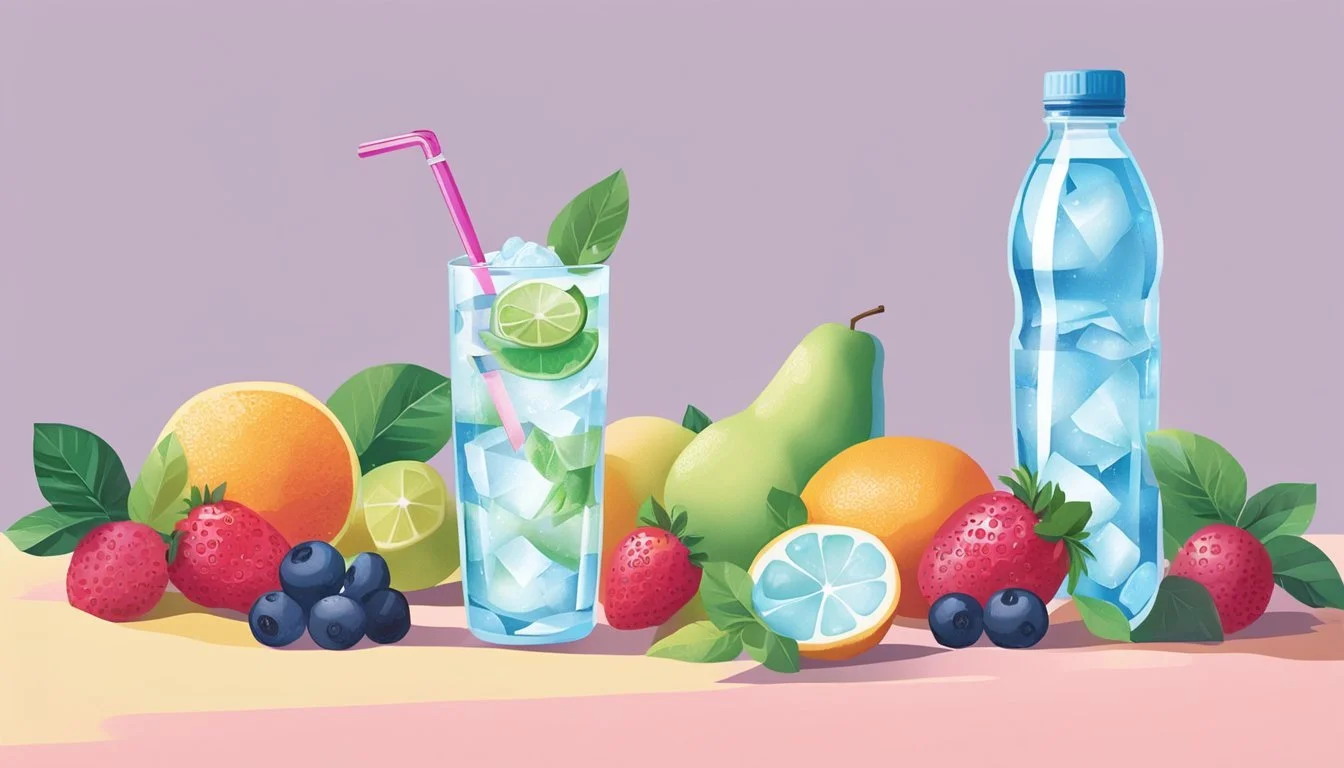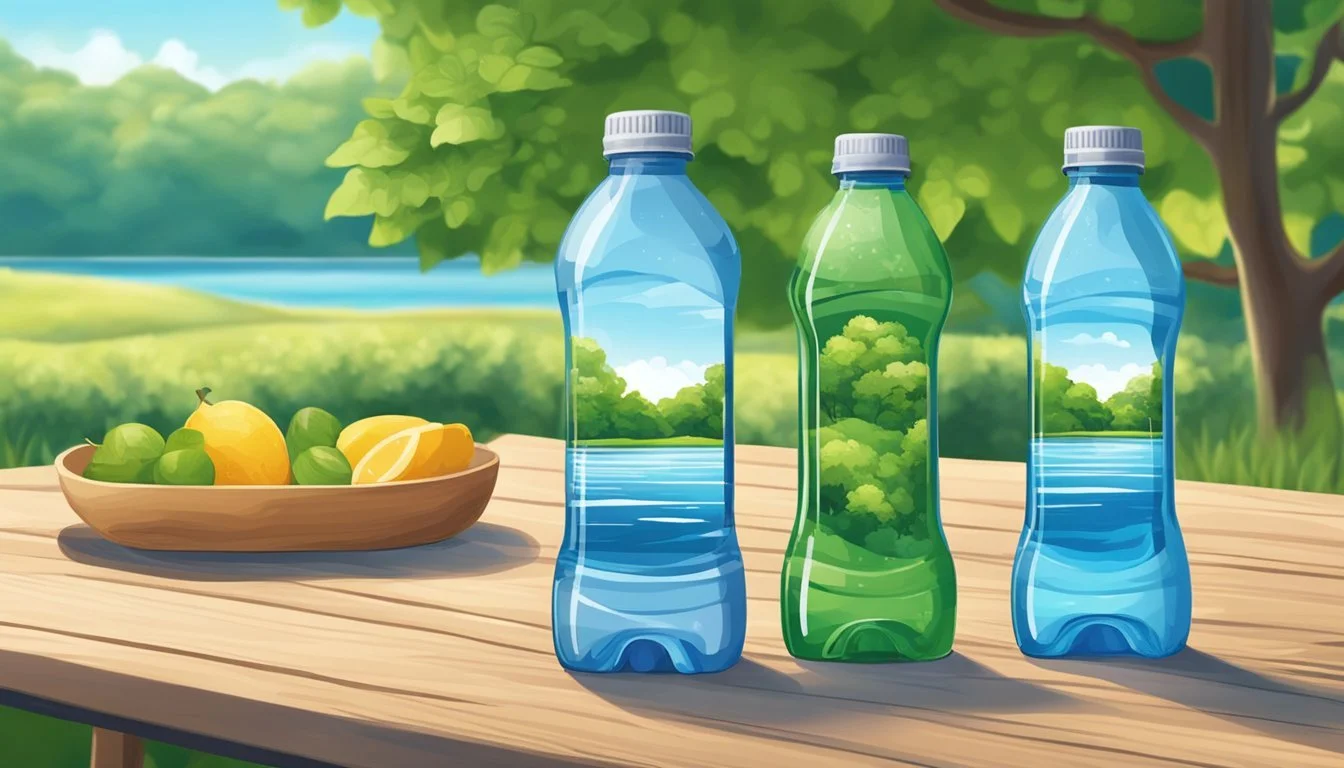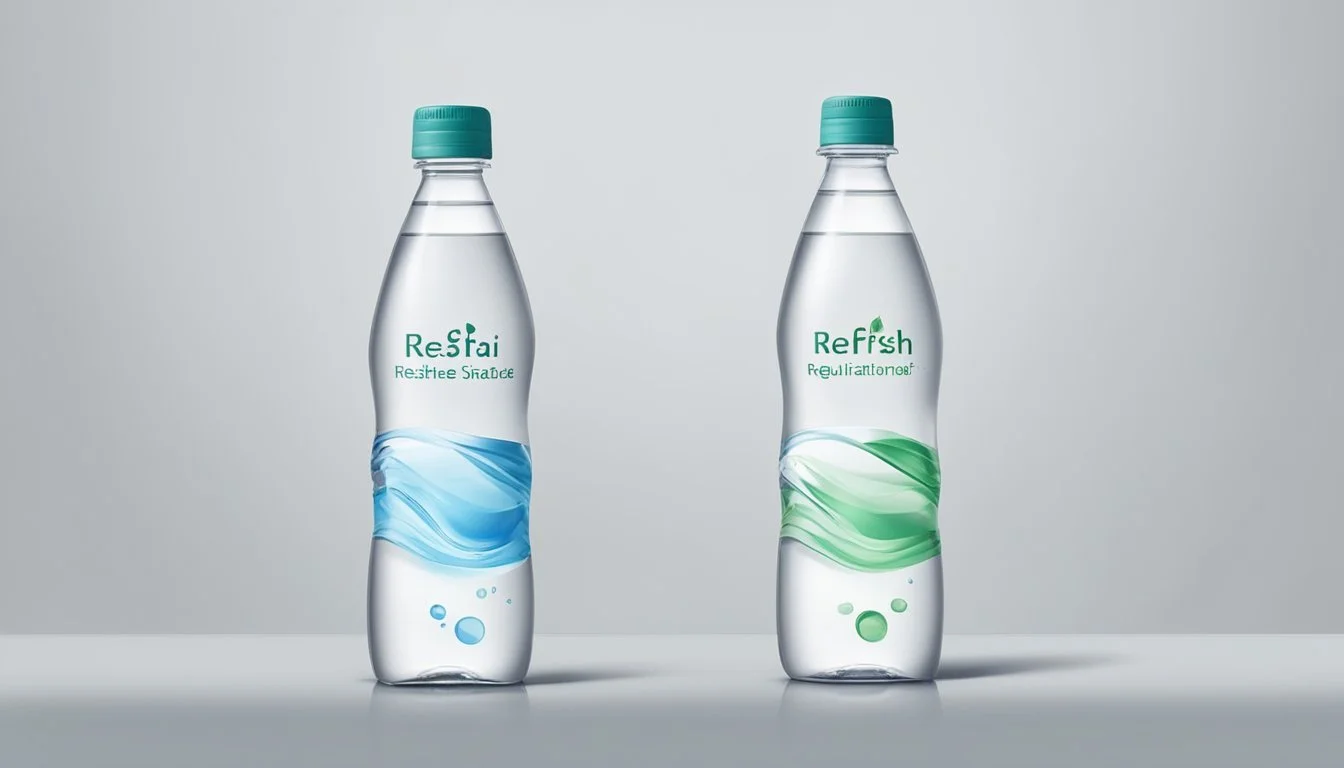Bai vs. Refreshe
Which Bottled Water Offers Superior Quality?
When it comes to choosing between Bai and Refreshe, both have distinct features that appeal to different consumers. Bai Water stands out for its added benefits, containing antioxidants from coffee fruit extract and vitamins like vitamin C. It offers a lightly sweetened taste with only 1 gram of sugar and 10 calories per serving. For health-conscious consumers, Bai may be the preferred option due to its functional ingredients and low calorie count.
On the other hand, Refreshe is a brand known for its straightforward and pure hydration. It does not contain additional ingredients or sweeteners, making it a good choice for those who prefer their water plain and simple. This brand is also widely accessible and typically more affordable, making it a go-to for budget-conscious shoppers.
Understanding the unique selling points of each brand will help readers make an informed decision. By weighing the health benefits of Bai against the simplicity and affordability of Refreshe, one can choose the bottled water that best fits their lifestyle and preferences.
The Rise of Bottled Water
Bottled water has evolved from a niche product to a global staple, driven by factors such as taste preferences and health considerations. Sustainability and environmental impact also play critical roles in its market dynamics.
History and Evolution
The history of bottled water dates back to the early 1600s in the United Kingdom. Initially, it was marketed for its supposed medicinal benefits derived from natural springs. Over time, the practice of bottling water spread to other countries, including France, where brands like Perrier became well-known for their naturally carbonated mineral water.
In the late 20th century, bottled water began to see unprecedented growth due to advancements in bottling technology and increased consumer interest in health and wellness. Major brands like Poland Spring and Evian emerged, offering various types of water, ranging from spring to mineral to flavored options like Bai.
Market Trends
The bottled water market has seen significant growth over the past few decades. Global sales expanded by 73% from 2010 to 2020. This surge was fueled by increasing consumer demand for healthier beverage options. Bottled water is now one of the fastest-growing segments in the beverage industry.
Brands such as Bai have capitalized on this trend by offering antioxidant-infused flavored waters, appealing to health-conscious consumers. Just Water and LIFEWTR have also entered the market, emphasizing eco-friendly packaging and enhanced water quality. This diversification has attracted a wide range of consumers, from fitness enthusiasts to environmentally aware individuals.
Consumer Preferences
Consumers today have diverse preferences when it comes to bottled water. Taste and health benefits are often top considerations. For example, flavored waters like Bai gain popularity for their low-calorie count and added antioxidants, which appeal to those looking for more than just hydration.
Additionally, there is a growing interest in sustainability. Brands adopting environmentally friendly practices, such as using recyclable materials and reducing plastic waste, resonate with eco-conscious buyers. Surveys indicate that many consumers are willing to pay a premium for sustainable choices, making it a crucial factor in the market.
In summary, the rise of bottled water is a multifaceted phenomenon driven by historical developments, evolving market trends, and shifting consumer preferences. Understanding these elements offers valuable insights into the current and future landscape of this ubiquitous product.
Brand Overview
Bai and Refreshe offer different approaches to bottled water. Bai is known for its flavored, antioxidant-infused beverages, while Refreshe emphasizes simplicity and purity.
Bai: Beyond Plain Water
Bai markets itself as a brand that transforms plain water into a flavorful, health-conscious drink. Each bottle contains only ten calories and is free from artificial sweeteners and added sugar. Bai's mission revolves around providing delicious options that are also beneficial, leveraging antioxidants from coffee fruit extract and tea extract to enhance hydration.
The brand's offerings cater to consumers looking for low-calorie, flavorful water with added health benefits. Bai has built a loyal customer base by combining taste with nutritional benefits, thus standing out in a crowded market. This focus on health and flavor aligns with Bai’s brand values, attracting health-conscious individuals who also want to enjoy their drinks.
Refreshe: Simplicity and Purity
Refreshe prides itself on offering straightforward, high-quality bottled water. It focuses on delivering pure, crisp water without any added flavors or nutritional enhancements. This straightforward approach appeals to consumers who prefer the simplicity and natural taste of unaltered water.
Refreshe's mission underscores its dedication to purity and simplicity, ensuring that every bottle provides just water, without any frills. This focus helps maintain consumer loyalty among those who value basic, reliable hydration without additional ingredients. The brand values clean, simple hydration, making it a go-to choice for people seeking minimalistic bottled water options without compromising on quality.
Product Analysis
Bai and Refreshe are both popular bottled water brands, each with unique ingredients, nutritional content, and packaging. Evaluating their distinctive features helps consumers make informed choices.
Ingredients and Formulation
Bai: Bai beverages are known for their antioxidant-infused formulas. They contain ingredients like coffee fruit extract and tea extract. Bai waters also include electrolytes enhancing hydration efficiency. The sweetened taste is achieved using small quantities of natural sweeteners, avoiding artificial additives.
Refreshe: Refreshe artesian water boasts a natural profile without additives. It is a pure form of water and contains no added electrolytes or sweeteners. Its source is natural artesian aquifers, promising natural mineral content and a fresh taste.
Nutritional Content
Bai: With a focus on health, Bai water contains only 1 gram of sugar and 10 calories per bottle. It is also gluten-free and includes antioxidants, contributing to additional health benefits. Bai's formulation is attractive to those seeking a low-calorie, nutrient-rich option.
Refreshe: Refreshe water maintains a profile of zero calories, zero grams of sugar, and no artificial ingredients. Its nutritional facts are straightforward, focusing purely on providing hydration without any additional aspects like calories or sugar.
Brand Sugar (g) Calories Additives Bai 1 10 Antioxidants, electrolytes Refreshe 0 0 None
Packaging and Presentation
Bai: The packaging of Bai reflects a modern, colorful, and vibrant design to match its flavor profile. Bottles are crafted from 100% recycled plastic, supporting environmental sustainability. This makes Bai an appealing choice for eco-conscious consumers.
Refreshe: In contrast, Refreshe offers a more straightforward packaging design emphasizing purity. It uses recyclable plastic bottles that focus on simplicity and functionality. Information on the bottle, like pH level and source, is clearly presented, appealing to those who appreciate transparency in product details.
Both brands cater to different preferences in taste, formulation, and environmental impact through their distinctive approaches.
Health and Nutrition
When comparing Bai and Refreshe, the focus on health and nutrition often revolves around caloric content, sweeteners, electrolytes, hydration, and the presence of vitamins and antioxidants. Each of these elements contributes to the overall health benefits of the beverages.
Caloric Values and Sweeteners
Bai contains 10 calories per bottle and 1 gram of sugar. It uses low-calorie sweeteners like stevia and erythritol, making it a suitable option for those looking to reduce calorie intake while still enjoying a sweet taste.
Refreshe, primarily a pure water brand, offers zero calories and does not have any added sugars or sweeteners. This lack of calories and sweeteners makes it a straightforward choice for hydration without additional dietary concerns.
Hydration and Electrolytes
Bai is infused with antioxidants and small amounts of electrolytes from its ingredients, including coffee fruit extract and tea. This addition aids in offering a refreshing beverage that supports hydration and a minor boost in electrolyte levels.
Refreshe, being regular bottled water, main purpose is straightforward hydration without any additional nutritional benefits. It does not contain electrolytes or enhancers, which some consumers may seek for quick hydration during physical activities.
Vitamins and Antioxidants
Bai is notable for its inclusion of vitamin C and antioxidants derived from coffee fruit extract. The presence of these nutrients offers a minor boost to the immune system and overall health benefits, which can be attractive for health-conscious consumers.
Refreshe does not include added vitamins or antioxidants. Its primary benefit is its accessibility as a hydrating beverage. Therefore, for those looking specifically at nutritional enhancements, Bai may present a more compelling option compared to Refreshe.
Environmental Considerations
Assessing the environmental impact of bottled water brands like Bai and Refreshe involves analyzing their plastic use, recycling practices, sustainable sourcing, and carbon footprint.
Plastic Use and Recycling
Both Bai and Refreshe utilize plastic bottles as their primary packaging. Plastic bottles have significant environmental concerns, primarily their contribution to landfills and marine pollution.
Bai uses PET plastic, which is recyclable, but recycling rates are low globally. Refreshe also uses PET containers, but specific efforts towards enhancing recyclability or incorporating recycled materials can vary.
Increased emphasis on using recyclable materials or reducing plastic waste can make a substantial environmental difference. Efforts at the consumer level to recycle properly and company initiatives to encourage recycling are critical.
Sustainable Sourcing
Sustainable sourcing considers where and how water is obtained. Bai sources from natural bodies and emphasizes antioxidant-infused beverages, adding additional ingredients like fruit extracts.
Efforts to ensure minimal impact on natural resources and maintain the balance of local ecosystems are crucial. Refreshe, as a generic brand, sources tap water which might be filtered and purified, presenting fewer sustainability concerns.
Transparent sourcing practices and certifications like sustainable water management are essential in evaluating their environmental footprint and impact on local communities.
Carbon Footprint
The carbon footprint of bottled water includes production, transportation, and disposal phases. Bai emphasizes antioxidants and additional ingredients, potentially leading to higher production emissions. Conversely, Refreshe's simpler approach, often distributed locally, might result in a lower carbon footprint.
Transportation plays a significant role. Local bottling and distribution reduce emissions, whereas long-distance shipping increases carbon output. Companies can reduce their footprint through efficiency measures, renewable energy use, and eco-friendly logistics practices.
Calculating and reporting emissions transparently shows a brand's commitment to minimizing its environmental impact and promoting sustainability.
Consumer Experience
When comparing Bai and Refreshe, consumers often consider the taste, health benefits, and availability of these bottled waters. Each brand offers unique attributes that cater to different preferences and needs.
Taste and Flavor Varieties
Bai is well-known for its flavor varieties, offering options such as Brasilia Blueberry and Costa Rica Clementine. These flavors are enhanced with antioxidants and have zero calories, making them appealing for those looking for a beverage with added benefits.
Refreshe, on the other hand, provides more traditional water choices. While it may lack the extensive** flavor range** of Bai, consumers appreciate its crisp and clean taste, which is comparable to other mainstream bottled water brands on the market.
Health Awareness and Choices
Bai positions itself strongly within the health-conscious market. Each bottle of Bai water contains antioxidants derived from coffee fruit extract and is free from artificial sweeteners. This makes Bai an attractive choice for those looking to stay hydrated while also benefiting from additional nutrients.
Refreshe water tends to focus on pure and straightforward hydration without added ingredients. It serves the needs of consumers who prefer simplicity and a lack of additional substances in their water. This appeals to those who prefer to have water without any added flavors or nutrients.
Purchase Locations and Accessibility
Bai and Refreshe differ in their purchase locations and accessibility. Bai water is widely available in various retail stores and online platforms such as Amazon. This extensive availability makes it easy for consumers to purchase Bai regardless of their location.
Refreshe is commonly found in supermarkets and large retail chains, often as an in-house brand. While it may not have the same online presence as Bai, its accessibility in brick-and-mortar stores provides convenience for shoppers who prefer to buy water in person.
By evaluating the taste, health benefits, and accessibility, consumers can choose the bottled water that best meets their personal preferences and needs.
Comparative Analysis
When comparing Bai and Refreshe bottled water brands, several aspects stand out, such as taste, health benefits, and overall value. Below, each factor is evaluated to give a comprehensive look at both products.
Advantages of Bai
Bai Water is often praised for its antioxidant-infused content. Each bottle blends flavors and antioxidants derived from coffee fruit extract, providing a unique offering in the bottled water market.
Sugar Content: Bai contains just 1 gram of sugar per bottle. This low sugar content, combined with no artificial sweeteners, makes it a healthier choice for those monitoring their sugar intake.
Calories: Bai's flavored water options are low in calories, typically containing only 10 calories per bottle. This makes Bai suitable for those looking to manage their calorie consumption without sacrificing flavor.
Variety: The brand also offers an array of flavors such as Kula Watermelon, enhancing the drinking experience beyond plain hydration.
Advantages of Refreshe
Refreshe, often sold in large retail chains, is a popular choice for many due to its affordability and wide availability. It primarily offers purified water options and is known for its consistency in taste and quality.
Purity: Refreshe guarantees purified water, which undergoes several filtration processes to remove contaminants. This ensures the water is clean and safe.
Accessibility: The brand is widely distributed, making it easy to find at most supermarkets and convenience stores.
Multipack Options: Refreshe is often sold in large multi-pack options, providing good value for families or those needing a steady supply of bottled water.
Low Cost: It is generally more affordable compared to premium brands like Smartwater and Mountain Valley Spring Water, making it a practical choice for budget-conscious consumers.
Pricing and Value
Bai Water: Bai tends to be on the higher end of the price spectrum due to its unique ingredients and health benefits. The cost reflects its positioning as a premium flavored water with added nutritional advantages.
Refreshe: Refreshe's pricing is competitive, offering a balance of quality purified water at a lower price point. This makes it a strong option for consumers seeking a cost-effective solution without compromising on purity.
Comparison:
Brand Price Range Unique Features Flavor Options Sugar Content Antioxidants Bai Higher Antioxidant-Infused, Low-Calorie Yes Low (1g) Yes Refreshe Lower Purified Water No None No
Regulations and Standards
Both Bai and Refreshe bottled water must adhere to stringent regulations to ensure quality and safety standards are met. These regulations encompass water quality, safety, and industry certifications to provide consumers with assurance on their hydration choices.
Water Quality and Safety
Bottled water sold in the United States, including Bai and Refreshe, is regulated by the U.S. Food and Drug Administration (FDA). The FDA sets quality standards that must be met regarding contaminants, including lead and other harmful substances.
Testing: Bottled water companies are required to regularly test their sources and products. This includes checking for microbiological, physical, chemical, and radiological contaminants.
Reports: Consumers can often find water quality reports provided by the companies which detail the pH levels, mineral content, and any contaminants present.
Filtration Methods: Bai uses advanced filtration techniques, often incorporating reverse osmosis and carbon filtration. Refreshe also employs rigorous filtration methods to meet FDA standards, ensuring purity and safety.
Industry Certifications
To further establish their credibility, bottled water brands like Bai and Refreshe often seek industry certifications.
NSF International Certification: An independent organization that provides certification for various health and safety standards. Both Bai and Refreshe may hold NSF certifications if they comply with stringent quality control processes.
International Bottled Water Association (IBWA): Membership in the IBWA requires adherence to additional safety and quality guidelines beyond those required by the FDA. Companies must undergo annual, unannounced inspections by an independent, third-party organization.
Other Certifications: Brands may also pursue eco-friendly certifications to appeal to environmentally conscious consumers. These can include certifications for sustainable sourcing and environmentally friendly packaging.
These certifications help ensure that consumers have access to safe, high-quality bottled water from trusted sources.
Final Verdict
To determine the better choice between Bai and Refreshe bottled water, several factors were considered, including taste, nutritional content, and environmental sustainability.
Summary of Findings
Taste: Bai water has a mild, smooth flavor profile with a slight tang at the end due to the added ingredients like selenium. Refreshe, being a simpler, purified water, is clean and refreshing but may lack the distinctive taste that some consumers look for.
Nutritional Content: Bai stands out with its addition of antioxidants from selenium, coffee fruit extract, and tea extract. Each bottle contains only 1 gram of sugar and ten calories, making it a low-calorie option. Refreshe does not provide these additional nutritional benefits but is straightforward, pure water.
Environmental Commitment: Bai emphasizes its commitment to sustainability, promoting its antioxidant properties and alkaline pH levels. Refreshe focuses on providing affordable hydration without specific environmental claims.
Recommendations for Consumers
For Health-Conscious Individuals: Bai is an excellent choice due to its enriched nutritional profile. The added antioxidants and low calorie and sugar content make it suitable for those looking to incorporate more health benefits into their hydration routine.
For Taste Preferences: Consumers who enjoy a bit of complexity in their bottled water might prefer Bai for its smooth and slightly tangy taste. Those who prefer a clean and neutral taste should consider Refreshe.
Sustainability Focused: If sustainability is a priority, Bai’s emphasis on eco-friendly practices might align more with your values. Refreshe offers straightforward hydration without a strong sustainability claim but remains a reliable option.
By highlighting these distinctions, it provides a clearer perspective for readers to make an informed choice based on their preferences and priorities.






